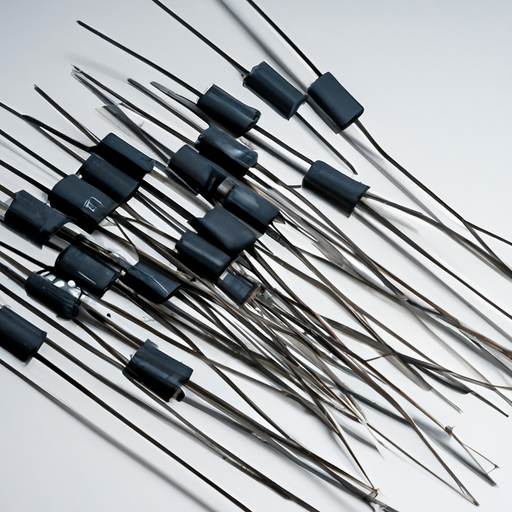

Chip resistors are an essential component in electronic devices, providing resistance to the flow of electric current. They come in various sizes and specifications to meet the diverse needs of different applications. In order to ensure the quality and reliability of chip resistors, there are certain product standards that manufacturers must adhere to. These standards cover various aspects of the design, manufacturing, and testing of chip resistors to ensure that they meet the required performance criteria.

Another important product standard for chip resistors is the power rating. This specifies the maximum amount of power that the resistor can dissipate without overheating. The power rating is determined by factors such as the size of the resistor, the material used in its construction, and the ambient temperature in which it will be operating. It is important to select a resistor with a power rating that is suitable for the intended application to prevent damage or failure due to overheating.
In addition to resistance value tolerance and power rating, chip resistors must also meet standards for temperature coefficient of resistance (TCR). This parameter specifies how the resistance of the resistor changes with temperature. A low TCR means that the resistance value remains relatively stable over a wide temperature range, which is important for applications where temperature variations are common. Chip resistors with a high TCR may exhibit significant changes in resistance with temperature, which can affect the performance of the circuit.
Furthermore, product standards for chip resistors also include specifications for voltage rating, size, and packaging. The voltage rating indicates the maximum voltage that the resistor can withstand without breaking down. It is important to select a resistor with a voltage rating that is higher than the maximum voltage in the circuit to prevent damage. The size of the resistor is determined by factors such as the power rating and the available space on the circuit board. Chip resistors come in various sizes, ranging from small 0201 packages to larger 2512 packages, to accommodate different applications.
Packaging is another important aspect of chip resistor standards, as it affects the reliability and performance of the resistor. Chip resistors are typically packaged in tape and reel or tray formats for automated assembly. The packaging must protect the resistor from physical damage, moisture, and other environmental factors that could affect its performance. It is important for manufacturers to follow industry standards for packaging to ensure that chip resistors are delivered to customers in optimal condition.
In conclusion, chip resistors are essential components in electronic devices, providing resistance to the flow of electric current. To ensure the quality and reliability of chip resistors, manufacturers must adhere to product standards that cover various aspects of the design, manufacturing, and testing of the resistors. These standards include resistance value tolerance, power rating, temperature coefficient of resistance, voltage rating, size, and packaging. By meeting these standards, manufacturers can produce chip resistors that meet the required performance criteria for a wide range of applications.
Chip resistors are an essential component in electronic devices, providing resistance to the flow of electric current. They come in various sizes and specifications to meet the diverse needs of different applications. In order to ensure the quality and reliability of chip resistors, there are certain product standards that manufacturers must adhere to. These standards cover various aspects of the design, manufacturing, and testing of chip resistors to ensure that they meet the required performance criteria.

Another important product standard for chip resistors is the power rating. This specifies the maximum amount of power that the resistor can dissipate without overheating. The power rating is determined by factors such as the size of the resistor, the material used in its construction, and the ambient temperature in which it will be operating. It is important to select a resistor with a power rating that is suitable for the intended application to prevent damage or failure due to overheating.
In addition to resistance value tolerance and power rating, chip resistors must also meet standards for temperature coefficient of resistance (TCR). This parameter specifies how the resistance of the resistor changes with temperature. A low TCR means that the resistance value remains relatively stable over a wide temperature range, which is important for applications where temperature variations are common. Chip resistors with a high TCR may exhibit significant changes in resistance with temperature, which can affect the performance of the circuit.
Furthermore, product standards for chip resistors also include specifications for voltage rating, size, and packaging. The voltage rating indicates the maximum voltage that the resistor can withstand without breaking down. It is important to select a resistor with a voltage rating that is higher than the maximum voltage in the circuit to prevent damage. The size of the resistor is determined by factors such as the power rating and the available space on the circuit board. Chip resistors come in various sizes, ranging from small 0201 packages to larger 2512 packages, to accommodate different applications.
Packaging is another important aspect of chip resistor standards, as it affects the reliability and performance of the resistor. Chip resistors are typically packaged in tape and reel or tray formats for automated assembly. The packaging must protect the resistor from physical damage, moisture, and other environmental factors that could affect its performance. It is important for manufacturers to follow industry standards for packaging to ensure that chip resistors are delivered to customers in optimal condition.
In conclusion, chip resistors are essential components in electronic devices, providing resistance to the flow of electric current. To ensure the quality and reliability of chip resistors, manufacturers must adhere to product standards that cover various aspects of the design, manufacturing, and testing of the resistors. These standards include resistance value tolerance, power rating, temperature coefficient of resistance, voltage rating, size, and packaging. By meeting these standards, manufacturers can produce chip resistors that meet the required performance criteria for a wide range of applications.